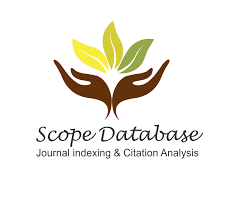Details
An Efficient Algorithm for Collision Avoidance Between a Solar Array Satellite and Space Debris
Varun Ahlawat
New Delhi, India
Download PDF http://doi.org/10.37648/ijrst.v12i04.004
http://doi.org/10.37648/ijrst.v12i04.004
Abstract
Half of the risk to any satellite is from debris collision. The main body of the satellite, housing the main electronics is encapsulated by bulletproof outer layers but most satellites include solar panels as the only energy source and they cannot be covered with multiple kevlar layers or any safety material. As space junk keeps on increasing, we seek to mitigate the tragedies related to it. Every collision in turn creates many new space junk particles which drives a positive feedback chain reaction, which could ultimately lead to a phenomenon known as “Kessler Syndromeâ€[1], which can render whole space unusable altogether. Several private companies like “LEO-Space†and government agencies are working to help solve this issue, yet some countries perform anti-satellite operations for military purposes each of which creates more than tens of thousands of pieces greater than 0.5 centimetres (that cannot be stopped by layers of protective material) traveling at relative speeds of up to 12km/sec on an average(which usually stay in their orbits for more than 100 years, depending on their altitudes and orbit). China (in 2007), the USA (in 2009), India (in 2019), and Russia (in 2021) have performed these so-called “tests†in the orbits of the altitude of the international space station creating countless debris of various sizes that would stay as a threat in most used orbit i.e. LEO(roughly 160km to 2000km above the earth’s surface).
Keywords: Collision Avoidance; Solar Array Satellite; Space Debris
References
- Kessler, D. J., Johnson, N. L., Liou, J. C., & Matney, M. (2010). The kessler syndrome: implications to future space operations. Advances in the Astronautical Sciences, 137(8), 2010
- Ren, S., Yang, X., Wang, R., Liu, S., & Sun, X. (2021). The Interaction between the LEO Satellite Constellation and the Space Debris Environment. Applied Sciences, 11(20), 9490.
- Johnson, N. L. (2001). Space debris modelling at NASA. EUROPEAN SPACE AGENCY-PUBLICATIONS-ESA SP, 473, 259-264.
- Bankman, I. N., Rogala, E. W., & Pavek, R. E. (2001). Laser radar in ballistic missile defense. Johns Hopkins APL Technical Digest, 22(3), 379-393.
- Wang, P., Ando, S., & Kurihara, T. (2009, November). Motion clustering and object detection via modulated integral imaging. In 2009 International Conference on Optical Instruments and Technology: Optoelectronic Imaging and Process Technology (Vol. 7513, pp. 217-222). SPIE.
- Schauland, S., Velten, J., & Kummert, A. (2007, September). 3D velocity filters for the detection of moving objects in image sequences. In 2007 15th European Signal Processing Conference (pp. 326-329). IEEE.
- Zhang, G., Yin, J., Deng, P., Sun, Y., Zhou, L., & Zhang, K. (2022). Achieving Adaptive Visual Multi-Object Tracking with Unscented Kalman Filter. Sensors, 22(23), 9106.
- Rozumnyi, D., Kotera, J. Sroubek, F., Novotny, L., & Matas, J. (2017). The world of fast-moving objects. In Proceedings of the IEEE Conference on Computer Vision and Pattern Recognition(pp. 5203-5211).
- Molaei, F., Eshkalak, K. E., Sadeghzadeh, S., & Siavoshi, H. (2021). Hypersonic impact properties of pristine and hybrid single and multi-layer C3N and BC3 nanosheets. Scientific Reports, 11(1), 1-10.
- Subramani, K., & Vinoth Kanna, I. (2019). Numerical Simulation of High Velocity Impact on Composite Targets Using Advanced Computational Techniques. In Innovative Design, Analysis and Development Practices in Aerospace and Automotive Engineering (I-DAD 2018) Volume 1 (pp. 399-413). Springer Singapore.
- Gonzalo, J. L., Colombo, C., & Di Lizia, P. (2021). Analytical framework for space debris collision avoidance maneuver design. Journal of Guidance, Control, and Dynamics, 44(3), 469-487.
- Seong, J. D., & Kim, H. D. (2013). Optimization of Space Debris Collision Avoidance Maneuver for Formation Flying Satellites. Journal of Astronomy and Space Sciences, 30(4), 291-298.











